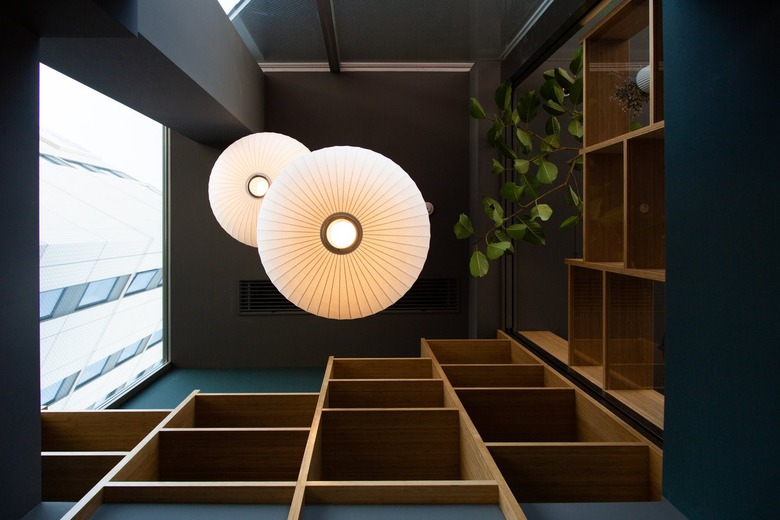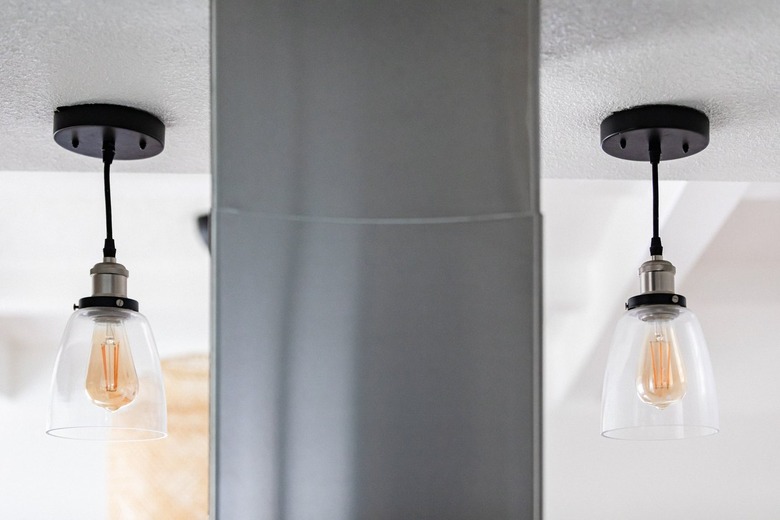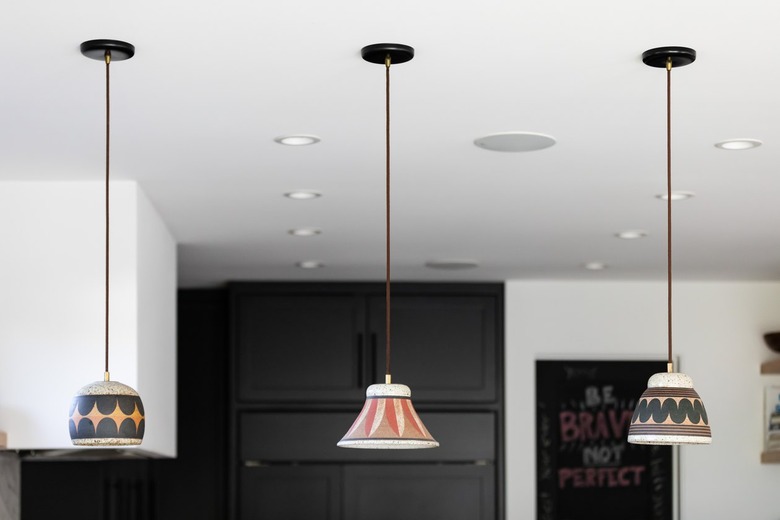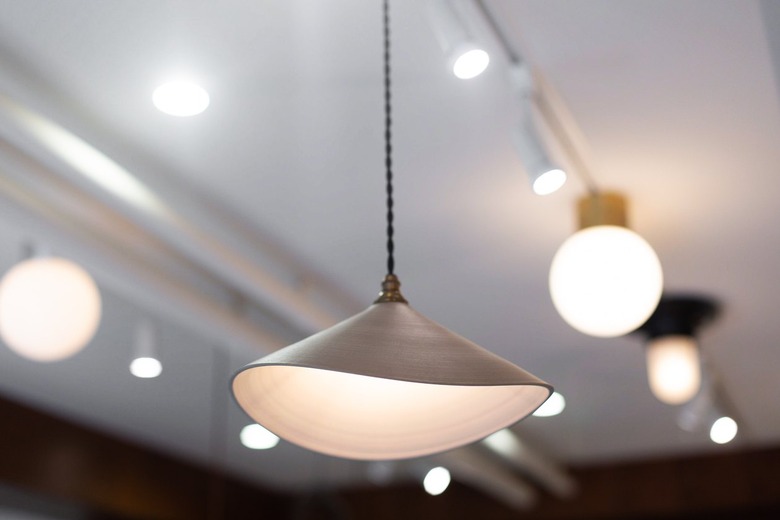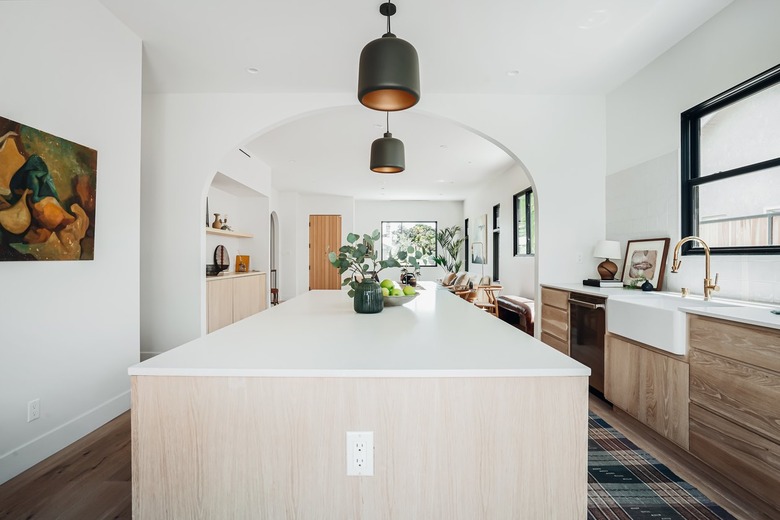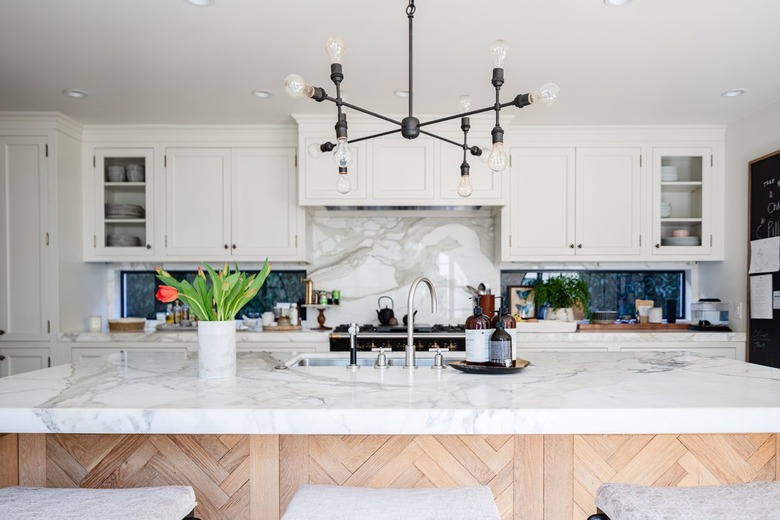Ceiling Lights: The Ultimate Buying Guide
We may receive a commission on purchases made from links.
In this modern age, it's easy to light up a room with the flick of a switch and not give the ceiling light much thought — until it's time for a change. Whether you want a new chandelier for your dining room or living room or better task lighting in the kitchen (like pendant lights over your kitchen island), you'll find an abundance of ceiling light choices at lighting retailers and home centers. Whatever style you choose, try to pick something that does more than just illuminate. The right lighting can make tasks easier, set a mood, or enhance your home decor.
How Much Do Ceiling Lights Cost?
How Much Do Ceiling Lights Cost?
As is often true with home decor and remodeling projects, you can spend a lot or a little depending on what you choose. If you're sticking to the basics, you can get a ceiling light fixture for as little as $20. Do you prefer something on the high end? You can easily find a fancy crystal chandelier for $4,000 or more.
On average, however, most people pay about $200 to $500 per fixture for ceiling lights, including the cost of the fixture and the installation. Many homeowners can DIY their light fixture installation, but a professional installation is typically $50 to $100 an hour. Most installations take about one to three hours depending on the complexity of the fixture.
Types of Ceiling Lights
Types of Ceiling Lights
If you go to the lighting section of a large home center or lighting store and look up, you'll see a massive array of lighting choices and designs. Each has pros and cons worth considering. Keeping them in mind can help you avoid falling in love with a fixture or style that won't function well in your space.
Flush-Mount Fixtures
As their name suggests, flush-mount fixtures sit tight on the ceiling, making them a good choice for rooms with a low ceiling. These lights are usually between 12 and 23 inches wide and work best with ceilings that are 8 feet tall or less. The light from a flush-mount fixture shines downward, illuminating the room without calling attention to itself.
Pros
- Works well for low ceilings
- Discreet and doesn't draw attention to itself
- Lights small rooms well
Cons
- Usually very plain
- May not provide adequate light in large rooms
Semiflush-Mount Fixtures
The semiflush-mount lights look like a cross between a flush-mount ceiling light and a chandelier. These lights sit 4 to 8 inches below the ceiling, which allows them to direct light down into the room and up toward the ceiling. Shining some light on the ceiling can make the room look bigger. Semiflush mounts work best with 8- to 10-foot ceilings.
Pros
- Can make a room feel bigger
- Available in a wide range of shapes and colors
- Often provides more light than flush-mount fixtures
Cons
- May work poorly in larger rooms
- Hangs down from the ceiling, limiting headroom
Chandeliers
Chandeliers are often considered over-the-top fixtures, but they don't have to be. Some chandeliers are dripping with fancy crystals and look quite elegant, but these light sources are available in a wide assortment of materials. Some are made of metal for a more rustic look, for example. Chandeliers work well in wide, open rooms and need not be limited to the dining room.
If you do opt for a chandelier over your dining room table, try to hang it about 30 inches above the dining table surface. Go too high and the chandelier will look too small for the space. If you go too low, however, the chandelier will look massive and out of proportion.
Pros
- Creates a focal point
- Illuminates rooms well
- Available in many styles
Cons
- People can walk into them if they're too low
- Doesn't work well in small spaces
- Can be expensive
Pendant Lights
Pendant lights are small fixtures that hang from the ceiling on visible power cords, a popular choice for homeowners interested in modern home design. Some are quite plain, while others are more ornate and sometimes very colorful. Because they hang so low, pendant lights can create a highly visible focal point in the room — they especially look great if you have high ceilings. When hung above a kitchen counter or bar that's used for dining, they can serve as both decorative and task lighting. Their light is very focused, however, and they won't illuminate an entire room.
Pros
- Lots of colors and styles
- Adds to the decor
- Works well as task lighting
Cons
- Can't light an entire room
- Hangs low, so you must be careful where you put it
Recessed Lighting
When you want light without making a statement or worrying about matching your home decor, recessed lighting is an excellent choice. Sometimes called pot or can lights, these fixtures sit up in the ceiling surrounded by a trim ring that sits against it. You can group these lights together for task or accent lighting, or you can disperse them across the entire ceiling for more general illumination.
Recessed lighting is discrete, and it works well in small areas or in places where there is a slope in your ceiling and you don't want a light that hangs. Some recessed lights come with something known as eyeball trim. This trim lets you adjust the direction of the light. This way, you can highlight a piece of art or direct the light away from computer and television screens.
Pros
- Lets you direct the light
- Discrete
- Works as general, accent, or task lighting
Cons
- Harder to install
- Need several to light the whole room
- Not decorative
Track Lighting
People have lots of opinions on this one. Usually, they either love track lighting or they hate it, with not a lot of in between. Track lighting is an assembly of individual, movable fixtures mounted on a metal track that is electrified to power all the lights. It's arguably the most versatile type of ceiling fixture because you can adjust the fixtures on the track to shine the light exactly where you want it.
The track and the light fixtures on it are very plain and very visible, with some claiming they detract from the look and feel of the room. There are many different styles and formats of track fixtures, from classic metal cylinders to colored glass shades hanging from cable-type tracks. The adjustability and customizability make track lighting highly effective at illumination and particularly good at lighting dark corners. Critics of track lighting usually point to its aesthetics, as it's a lot of hardware on the ceiling. Also, each fixture primarily directs light in one direction.
Pros
-
Adjustable and customizable
-
Lots of colors and styles
Cons
- Not discrete and can be unattractive
- Each fixture primarily directs light in one direction
Ceiling Light Materials
Ceiling Light Materials
Ceiling lights come in a wide variety of materials to match both your decorating style and your taste. Many are made of metal, including brass, copper, aluminum, and steel. You'll also find glass, acrylic, and various fabrics in different types of ceiling lights. Metals are durable and long-lasting, and they can also create a very modern feel. Fabric is used to make lampshades and is particularly common in drum lamps, which are round like a drum and consist of fabric wrapped on a frame.
When it comes to home use, you can expect all of these materials to last for many years. You may find fabric shades fading if your ceiling light hangs in the path of direct sunlight for part of the day, but this fading takes years to become noticeable. The bigger concern with light fixtures is weight. A sleek aluminum light, for instance, may be considerably lighter than a chunky, rustic steel one. This makes it important to hang your fixture to the right type of electrical box and use lighter fixtures if you have concerns about weight.
Cleaning is also a concern. You can wipe down most light fixtures easily with a damp cloth. Fabrics may trap and hold dust, though, so you may have to clean them with a vacuum cleaner attachment. Be mindful of how much you want to clean. A fancy chandelier with lots of crystals hanging from it takes much more time to clean than a simpler design.
Ceiling Light Cost Factors
Ceiling Light Cost Factors
One of the most often overlooked cost factors when considering ceiling lights is the extras. Do you need a new light switch? You may if you're installing a light in a new place or switching to one that is dimmable. It can cost $100 to $200 to have an electrician install a new switch.
You'll also want to think about light bulbs. Different types of bulbs carry different price tags and may last for different periods of time. Energy efficiency is also a concern — LED bulbs are typically the best lighting option if you're interested in conserving energy. But in general, look for one with the Energy Star logo that costs less to run, especially if you think you'll use the light fixture often.
If you're swapping out an existing fixture, you probably won't need a building permit. Adding a fixture where there wasn't one before, however, may require an electrical permit and an inspection. This could add $20 to $100 to your new light fixture costs depending on the fees where you live.
The materials used in the light itself are actually a very small cost factor. Ceiling lights come in such a wide variety of price points that you can likely find something in your price range no matter what it's made from. Style is a more important factor, with chandeliers usually starting at around $100, while other styles can be had for as little as $20.
Other Considerations
Other Considerations
When installing a new ceiling light, you may want to consider including a motion sensor, either as a wall switch or integrated with the light fixture. A motion sensor will turn the light on when you enter the room and turn it off when you leave and the motion stops. This is a handy feature in a playroom where kids may forget to turn the light off or in the kitchen where your arms may be full of groceries when you first enter the room.
If you're changing the light fixture in a business, pay attention to the Americans with Disabilities Act rules. These rules may dictate how high you can place light switches or what kind of light you can use. Know what the regular building code requires too. For example, you cannot install hanging lights within reach of a bathtub or shower.
How to Pick the Right Ceiling Lights for Your Home
How to Pick the Right Ceiling Lights for Your Home
Picking the right ceiling light for you is largely a matter of personal taste and existing interior design as well as any lighting needs you may have. There are some practical considerations to think about, however. Make sure you choose a light that corresponds to how you use the room. You may need to add ambient lighting and task lighting to a single space to get the effect you want.
It's unwise to hang a fabric light fixture in the kitchen where it will be prone to collecting grease that may be hard to remove. Keep in mind the recommended ceiling height for various light fixtures as well. You don't want a low-hanging fixture on a low ceiling or an overwhelmingly large fixture in a small room.
Other than that, it's all about you. If you can see where you need to see, like the light you picked, and have room to hang it without walking into it, then all is well. An interior decorator can help you pick the right lights or achieve a layered lighting look if that's what you're after, but the most important thing is that you're happy with your new lights even if they don't follow all the guidelines for perfectly lighting a room the way the experts would.
